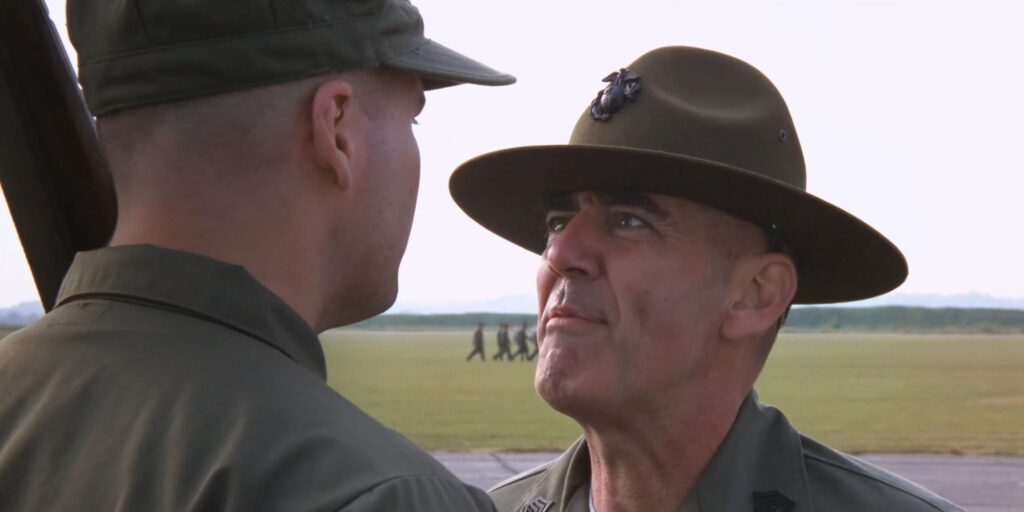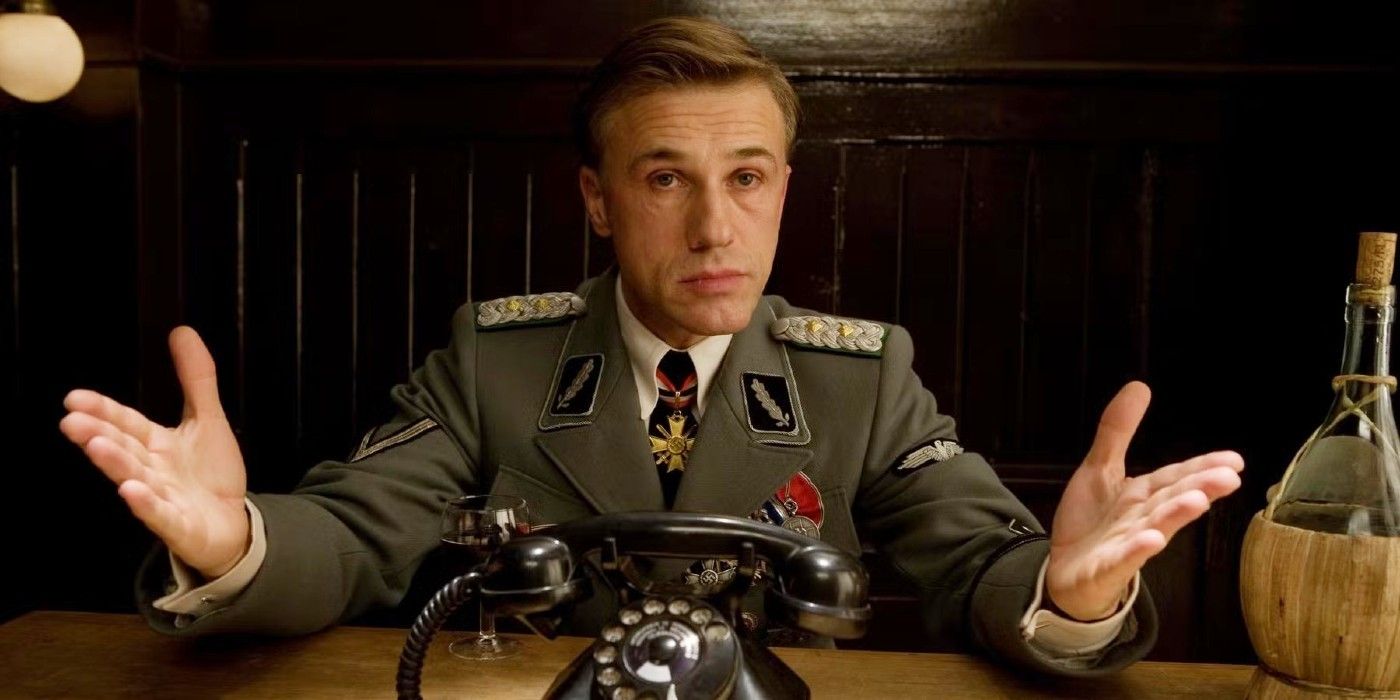War movies have been around since the start of cinema, with several silent films before the sound era began, and over time, standout releases have defined the war genre. Several great movies were set during wars from ancient times, but the best of the genre took place in wars that occurred during the lifetime of the filmmakers who made them.
Some of the best war movies were based on World War II, a conflict that occurred after the world started making films. These films took things in a darker, more realistic direction since the war was fresh on people’s minds. The same thing happened with the Vietnam War, although the American Civil War is also a popular subject.
1
All Quiet On The Western Front (1930)
In 1929, German author Erich Maria Remarque wrote All Quiet on the Western Front about his service in World War I, and it remains one of the best anti-war stories ever written. The book was adapted into three different films. The 2022 version was nominated for nine Oscars, but the 1930 version is a masterpiece.
The movie was a pre-Code anti-war movie, allowing it to show the grim and deadly effects of war on soldiers’ psyches. The story begins with a German professor explaining to his students the importance of defending their country. When things move to the battlefields of World War II, the students learn their country doesn’t care about them.
While Germany banned All Quiet on the Western Front in book and movie forms, the Library of Congress added All Quiet on the Western Front to the National Film Registry in 1990. All Quiet on the Western Front won the Oscar for Outstanding Production and Best Director, the first ever to win both awards.
2
Paths Of Glory (1957)
In 1957, Stanley Kubrick released one of the best anti-war movies ever made. Paths of Glory, set during World War I, reveals how countries and commanding officers don’t care about their loyal soldiers, sacrificing them for ulterior motives. Here, three innocent soldiers are killed by a firing squad after a farce of a trial.
Kirk Douglas stars as Colonel Dax, a criminal defense lawyer in real life. He was asked to defend the three soldiers tried for desertion, even though it was the commanding officer who was to blame. However, he is told the trial was only for show, to save the commander’s reputation and to set an example for other soldiers.
The Oscars ignored the movie, but it received a BAFTA nomination for Best Film, and the Library of Congress added it to the National Film Registry in 1992. Paths of Glory is also highly influential, and Steven Spielberg used its battle scenes as a template for his own Saving Private Ryan 50 years later.
3
Patton (1970)
In 1970, war movies took a different direction. Before this, most movies were about soldiers in a war, and the war on the battlefield. However, in 1970, it was time to focus on a legendary real-life military commander. Patton is a biographical film about General George S. Patton during World War II, with George C. Scott in the lead role.
General George S. Patton commanded the Seventh Army in the Mediterranean Theater and the Third Army in France and Germany after the invasion of Normandy in June 1944. He helped lead the Allied troops into Nazi Germany to help end the war. This movie tells the story of how he led unprepared troops to help end the war.
This film succeeded in taking a war movie and delivering a great biopic about one person at the same time. Patton won seven Oscars, including Best Picture, Best Director, and Best Original Screenplay, co-written by Francis Ford Coppola and Edmund H. North. It was added to the National Film Registry in 2003.
4
Apocalypse Now (1979)
After mastering the gangster genre with The Godfather and winning an Oscar for his screenplay for Patton, Francis Ford Coppola returned to the war genre with Apocalypse Now. What resulted was one of the most uneasy and unnerving war movies ever made, and much of that was thanks to the stressful film shoot.
The story of the making of Apocalypse Now is as famous as the movie and was told in the documentary Hearts of Darkness. However, as great as that story is, the film is even better, one of the best Vietnam War movies ever made, and one that was made only a few years after that terrible war ended.
The story sees a military captain named Willard (Martin Sheen) sent to assassinate a former commander (Marlon Brando) who is believed to have turned traitor. Once again, this is a movie about the horrors of war, not one glorifying war, and it earned eight Oscar nominations, although it only won two.
Full Metal Jacket is another Vietnam War movie, and the second war movie Stanley Kubrick made that defined the genre. In the same way that Paths of Glory was an anti-war movie, so was Full Metal Jacket, as it showed the horrors of war before the soldiers even took things to the battlefield.
This movie’s first half is all about basic training and how the trainers dehumanize and turn the soldiers into animals before sending them out to kill the enemy. It is a horrific look at how the American military (as well as other countries) only care about sending weapons out to kill in their name, and care nothing about the men themselves.
The movie shows how these men struggle to keep their humanity when they step onto the battlefield. This film made R. Lee Ermey a star and every movie since this one has used his performance as an example of how drill sergeants are portrayed on screen. The film only received one Oscar nomination, but remains a masterpiece.
6
Glory (1989)
Glory did something very different when it came to how Hollywood presented war films. This was a Civil War movie, and in the past, that meant telling stories about the Union battling the Confederacy. However, this film didn’t care about that as much as it did about telling the story of Black volunteers fighting for the Union.
This movie, directed by Edward Zwick, starred Denzel Washington, Morgan Freeman, and more as a fictionalized version of one of the first all-Black troops in the Civil War. Matthew Broderick and Cary Elwes star as the soldiers meant to lead them, but this was about the troops themselves and how they fight in a war for their freedom.
Glory received five Oscar nominations and Washington won his first-ever Oscar for his performance in this movie. This film set the table for future similar movies depicting other wars, such as Da 5 Bloods, Miracle at St. Anna, and Red Tails to tell these previously untold stories.
7
Saving Private Ryan (1998)
Steven Spielberg directed two of the most influential war movies about World War II ever made, only a few years apart from each other. The best movie was Schindler’s List, which told the story of one man’s efforts to help people escape from Nazi Germany to avoid the extermination camps. However, the best war film is Saving Private Ryan.
This movie sees a military unit sent into Normandy to retrieve one soldier, based on an American law that states if all siblings are killed during wartime battles, the last one surviving is pulled out and sent back home. That soldier is Private Ryan (Matt Damon), but the movie importantly focuses on the troops sent in to pull him out.
This is one of the hardest war movies to watch, as countless people die in the opening scenes as they charge the beaches of Normandy. Add to the fact that many of the lead characters led by Tom Hanks’ Captain John Miller also die, and this is a movie that really slams home the fact that war is hell.
8
The Thin Red Line (1998)
Terrence Malick is best known for his arthouse movie style, which is a good reason why his 1998 war movie was mostly overshadowed. It came out in the same year that Steven Spielberg released his big-budget war movie Saving Private Ryan. Both films tell a story about World War II, but The Thin Red Line is much more cerebral.
The Thin Red Line cast is incredible, with George Clooney, Adrian Brody, John Cusack, Woody Harrelson, Jared Leto, John Travolta, and more. With Malick behind the camera, it was guaranteed to look good, and if not for Saving Private Ryan, it would have been a monster hit. It was still an Oscar nominee and has a Criterion release.
The Thin Red Line has a great reputation as a war movie that doesn’t pull any punches, and while it isn’t quite as bombastic as Saving Private Ryan, its gritty and brutal battle and death scenes hold up well even now, almost 30 years later.
9
Letters From Iwo Jima (2006)
Clint Eastwood did something impressive in 2006. He released two movies about the same battle in a war, but each film told the story from different sides. In Flags of Our Fathers, he told the story of the Americans’ viewpoint during the Battle of Iwo Jima. Letters from Iwo Jima told the story from the Japanese soldiers’ point of view.
For a filmmaker who has often been labeled as overly patriotic at times, it was his handling of the story from the Japanese soldiers’ point of view that ended up as the better movie. Ken Watanabe takes the lead in the film, which ended up nominated for four Oscars, including Best Picture.
Flags of Our Fathers has a 76% Rotten Tomatoes score, while Letters from Iwo Jima has a very high 91% score. It was an interesting turn to tell the story from the Japanese point of view, and it was something that helped Hollywood change the narrative in many future war movies in creating a more nuanced and balanced story.
10
Inglourious Basterds (2009)
Inglourious Basterds did something unique in the war movie genre. The film told a story of a fictional battle in World War II and then ended up going completely off the rails and presenting an elseworlds story of “what if?” concerning how the Allies won and what would have happened if the troops had killed Adolf Hitler.
Several movies and TV shows over the years have taken these alternate future storylines and ran with them, with The Man in the High Castle as a perfect example of asking what would have happened if Nazi Germany had won World War II. This movie asked a different question as an excuse to deliver Quentin Tarantino-style action and dialogue.
Inglourious Basterds earned eight Oscar nominations, including Best Picture and Best Director, while Christoph Waltz won Best Actor. For war movies, this showed what could happen if an auteur director was allowed to rewrite history, and it opened the door for massive creative decisions in the future.


